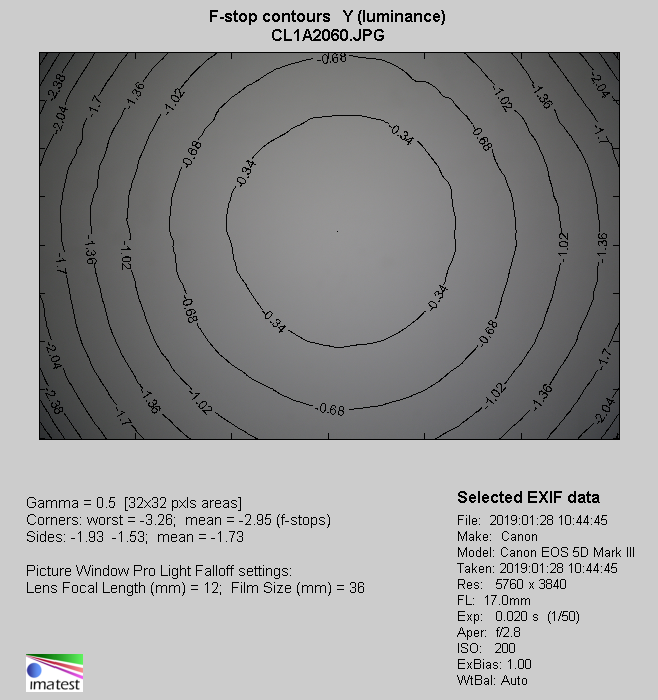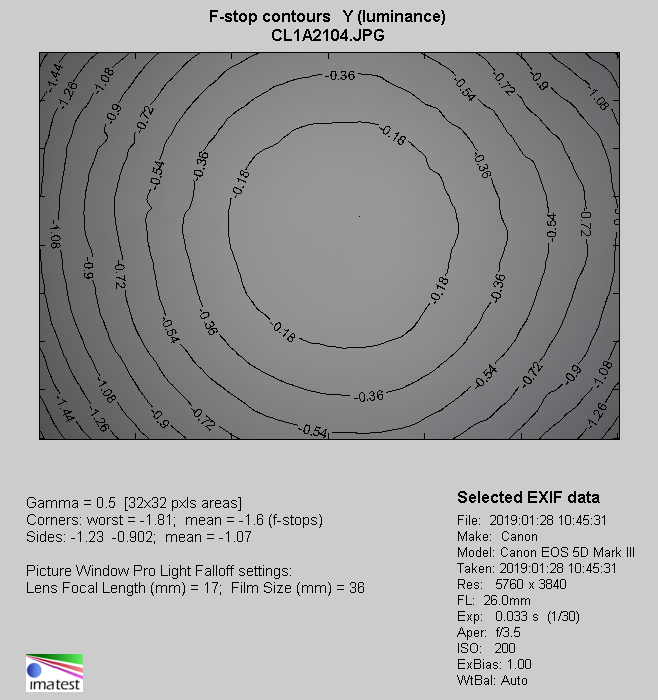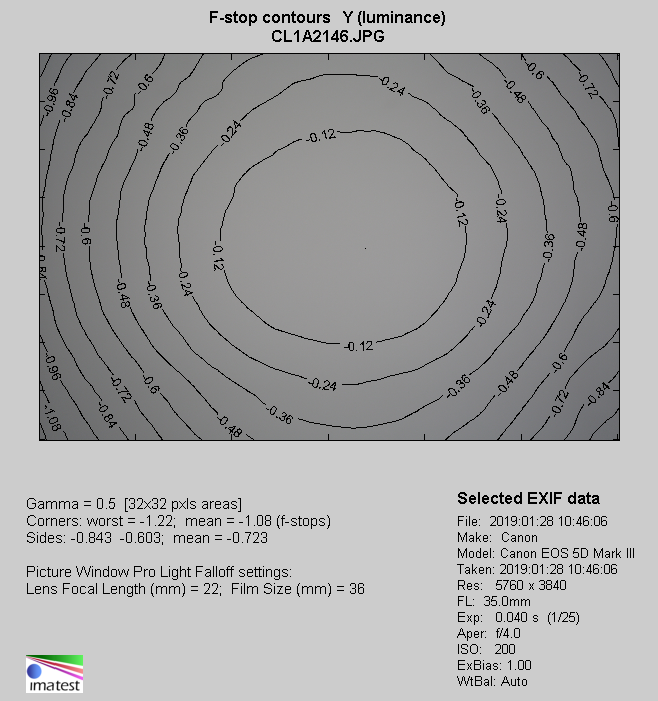Tamron 17-35 mm f/2.8-4 Di OSD
8. Vignetting
| Canon 50D, 17ámm, f/2.8 | Canon 50D, 17ámm, f/4.0 |

|

|
| Canon 50D, 26ámm, f/3.5 | Canon 50D, 26ámm, f/5.6 |

|

|
| Canon 50D, 35ámm, f/4.0 | Canon 50D, 35ámm, f/5.6 |

|

|
In the case of the 17 mm focal length and the maximum relative aperture the loss of light in the frame corners gets to 28% (−0.94 EV) and then decreases to 12% (−0.36 EV) on stopping down the aperture to f/4.0. By f/5.6 the vignetting decreases a bit more to a value of 11% (−0.34 EV).
Please Support UsIf you enjoy our reviews and articles, and you want us to continue our work please, support our website by donating through PayPal. The funds are going to be used for paying our editorial team, renting servers, and equipping our testing studio; only that way we will be able to continue providing you interesting content for free. |
- - - - - - - - - - - - - - - - - - - - - - - - - - - - - - - - - - - - - - - - - - - - - - - -
The situation is a bit better in the middle of the focal range. At the maximum relative aperture vignetting amounts to 22% (−0.73 EV) and by f/4.0 it decreases to 17% (−0.54 EV). When you pass to the f/5.6 aperture the tested aberration drops some more, to a value of 13% (−0.40 EV) to be more precise.
The best situation can be observed at the maximum relative aperture: by f/4.0 the vignetting is 18% (−0.57 EV) and it decreases to 11% (−0.35 EV) on stopping down the aperture to f/5.6.
Now let’s check how the Tamron 17-35 mm fares in this category on the full frame detector of the Canon 5D Mark III.
| Canon 5DáIII, 17ámm, f/2.8 | Canon 5DáIII, 17ámm, f/4.0 |

|

|
| Canon 5DáIII, 26ámm, f/3.5 | Canon 5DáIII, 26ámm, f/5.6 |

|

|
| Canon 5DáIII, 35ámm, f/4.0 | Canon 5DáIII, 35ámm, f/5.6 |

|

|
A difficult combination of sensibly small physical dimensions, an ultra-wide angle of view and a fast f/2.8 aperture makes itself felt here. In the frame corners you lose as much as 64% of light (−2.95 EV). By f/4.0 and f/5.6 apertures that loss is diminished to, respectively, 45% (−1.72 EV) and 33% (−1.17 EV). Even by f/8.0 and f/11.0 the vignetting still remains noticeable as it amounts to 27% (−0.93 EV).
At the 26 mm focal length there is a strong improvement. At the maximum relative aperture the aberration, described here, gets to 43% (−1.60 EV). By f/4.0 it decreases to 34% (−1.20 EV), and by f/5.6 it drops to 22% (−0.73 EV). Further stopping down doesn’t influence vignetting in any measureable way.
Like in the case of the EOS 50D the best result you can observe at 35 mm. By f/4.0 the vignetting reaches 31% (−1.08 EV), and then drops to 21% (−0.67 EV), on stopping down the aperture to f/5.6. By f/8.0 the vignetting decreases even more, amounting to 18% (−0.59 EV).
| Canon 5DáMkáIII, 17ámm, f/2.8 |
 |
| Canon 5DáMkáIII, 26ámm, f/3.5 |
 |
| Canon 5DáMkáIII, 35ámm, f/4.0 |
 |






